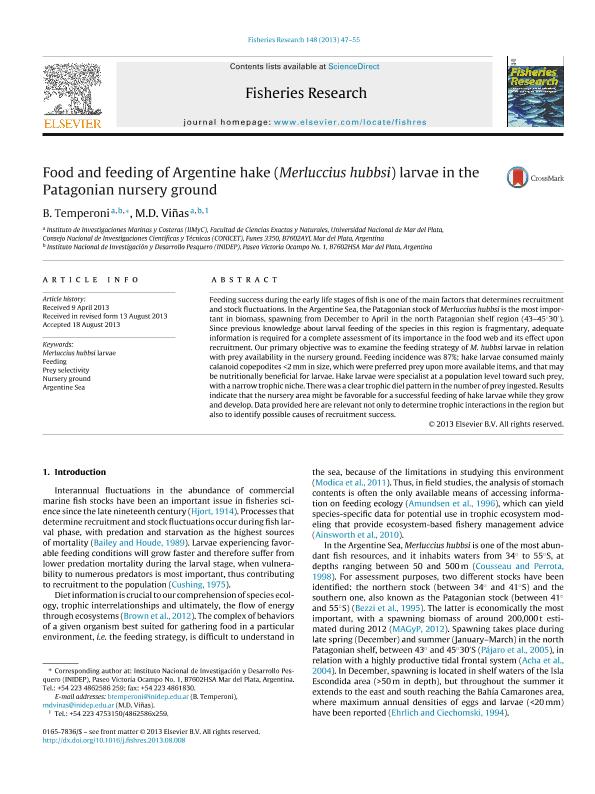Artículo
Food and feeding of Argentine hake (Merluccius hubbsi) larvae in the Patagonian nursery ground
Fecha de publicación:
11/2013
Editorial:
Elsevier Science
Revista:
Fisheries Research
ISSN:
0165-7836
Idioma:
Inglés
Tipo de recurso:
Artículo publicado
Clasificación temática:
Resumen
Feeding success during the early life stages of fish is one of the main factors that determines recruitment and stock fluctuations. In the Argentine Sea, the Patagonian stock of Merluccius hubbsi is the most important in biomass, spawning from December to April in the north Patagonian shelf region (43–45°30′). Since previous knowledge about larval feeding of the species in this region is fragmentary, adequate information is required for a complete assessment of its importance in the food web and its effect upon recruitment. Our primary objective was to examine the feeding strategy of M. hubbsi larvae in relation with prey availability in the nursery ground. Feeding incidence was 87%; hake larvae consumed mainly calanoid copepodites <2 mm in size, which were preferred prey upon more available items, and that may be nutritionally beneficial for larvae. Hake larvae were specialist at a population level toward such prey, with a narrow trophic niche. There was a clear trophic diel pattern in the number of prey ingested. Results indicate that the nursery area might be favorable for a successful feeding of hake larvae while they grow and develop. Data provided here are relevant not only to determine trophic interactions in the region but also to identify possible causes of recruitment success
Archivos asociados
Licencia
Identificadores
Colecciones
Articulos(CCT - MAR DEL PLATA)
Articulos de CTRO.CIENTIFICO TECNOL.CONICET - MAR DEL PLATA
Articulos de CTRO.CIENTIFICO TECNOL.CONICET - MAR DEL PLATA
Citación
Temperoni, Brenda; Viñas, Maria Delia; Food and feeding of Argentine hake (Merluccius hubbsi) larvae in the Patagonian nursery ground; Elsevier Science; Fisheries Research; 148; 11-2013; 47-55
Compartir
Altmétricas




